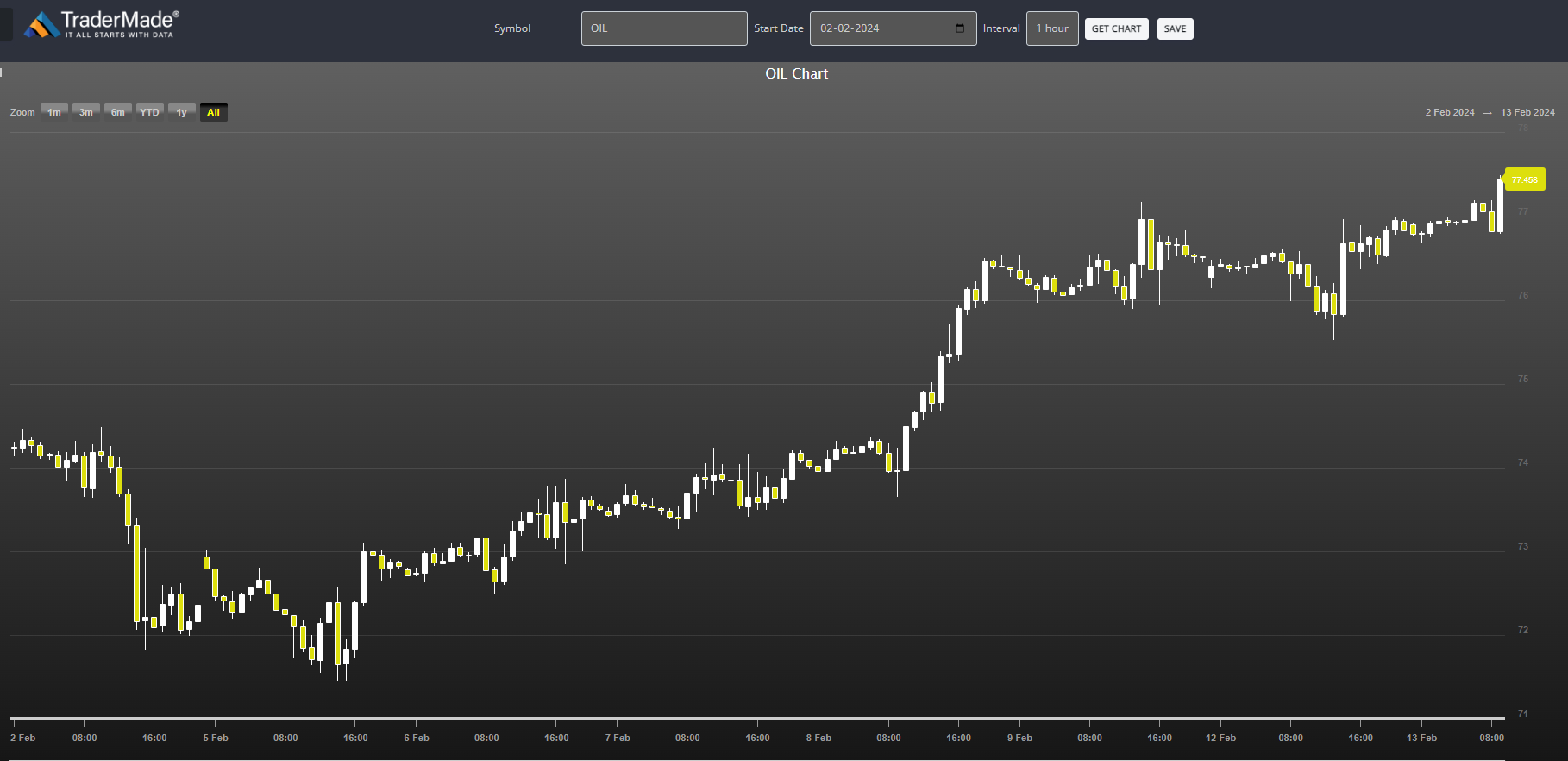
Crude Oil Soars On Supply Threats and Rate Uncertainty
London: 13 February 2024 (TraderMade): Oil prices edged higher on Tuesday, caught between fears of disrupted supply due to Middle East tensions and uncertainty about future interest rate cuts.
Brent Crude (UKOIL) soared 7.67% since 5 February. It is at $82.42 a barrel.
WTI Crude (OIL) surged 8.46% since 5 February. It is at $77.502 a barrel.
Key Takeaways
- Middle East conflict: Recent missile attacks by Yemen's Houthis and ongoing Israel-Hamas tensions raise concerns about potential supply disruptions.
- Interest rate worries: High inflation expectations might delay Fed cuts, hindering economic growth and oil demand.
- US inventory data: Focus on industry estimates for potential crude inventory rise.
- OPEC report: The market awaits insights from OPEC's monthly oil market report.
- US shale production: Expected increase in US shale output raises supply outlook.
WTI Crude (OIL) Poised for Further Climb?

WTI Crude has seen a positive trajectory over the past week, with the price climbing from $72.37 on 2 February to $77.50. This translates to a 7.28% increase, suggesting bullish momentum in the market.
Key observations
- Steady Climb: The price has consistently closed higher since 5 February, indicating sustained buying pressure.
- Breakout: The recent surge past $77 marks a breakout (price movement through an identified level of support or resistance) - from the previous consolidation range, potentially signaling a further upward trend.
- Geopolitical Tensions: Ongoing conflicts in the Middle East could disrupt supply and contribute to price increases.
- Technical Analysis: While not guaranteed, technical indicators like the moving average convergence divergence (MACD) suggest continued bullishness.
Overall, WTI Crude appears to be on an upward trajectory in the short term. However, several factors could impact its future direction. Closely monitoring developments in the geopolitical landscape, economic data, and technical indicators will be crucial for informed trading decisions.
Driving Factors
Middle East Tensions
The ongoing conflict in the Middle East continues to support oil prices. Houthi missile attacks targeting an Iran-bound ship and the Israel-Hamas conflict raise concerns about potential supply disruptions. However, a move by the US to tighten sanctions on Iran could further impact market supply.
Interest Rate Uncertainty
Uncertainty about the pace of potential US interest rate cuts limits oil price gains. High inflation expectations suggest the Fed might hold off on cuts, potentially slowing economic growth and reducing oil demand. Upcoming inflation data from the US and UK, and Eurozone GDP data, will be closely watched.
Inventory and OPEC
Market participants await industry data on US crude inventories expected later today. Additionally, OPEC's monthly oil market report, scheduled for release on Tuesday, will provide insights into supply and demand dynamics. OPEC and its allies will decide in March whether to continue voluntary production cuts.
US Shale Production
US shale oil production is expected to increase in March, potentially reaching its highest level in four months. This rise in supply could put downward pressure on oil prices.
Summary
While Middle East tensions support oil prices, concerns about future interest rates and rising US shale production create a counterbalancing force. Industry data, OPEC's report, and upcoming economic data will be crucial in determining the near-term direction of oil prices.



